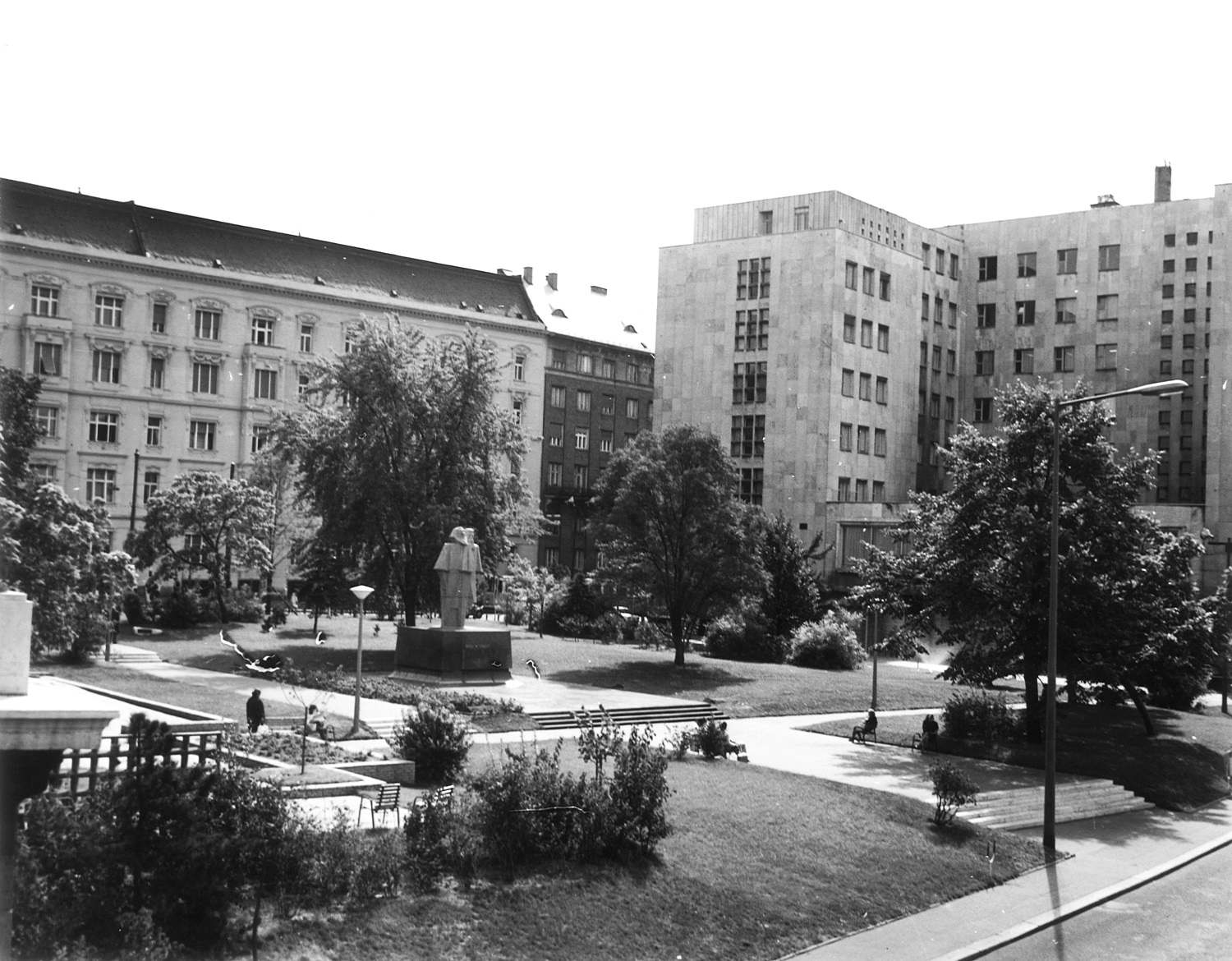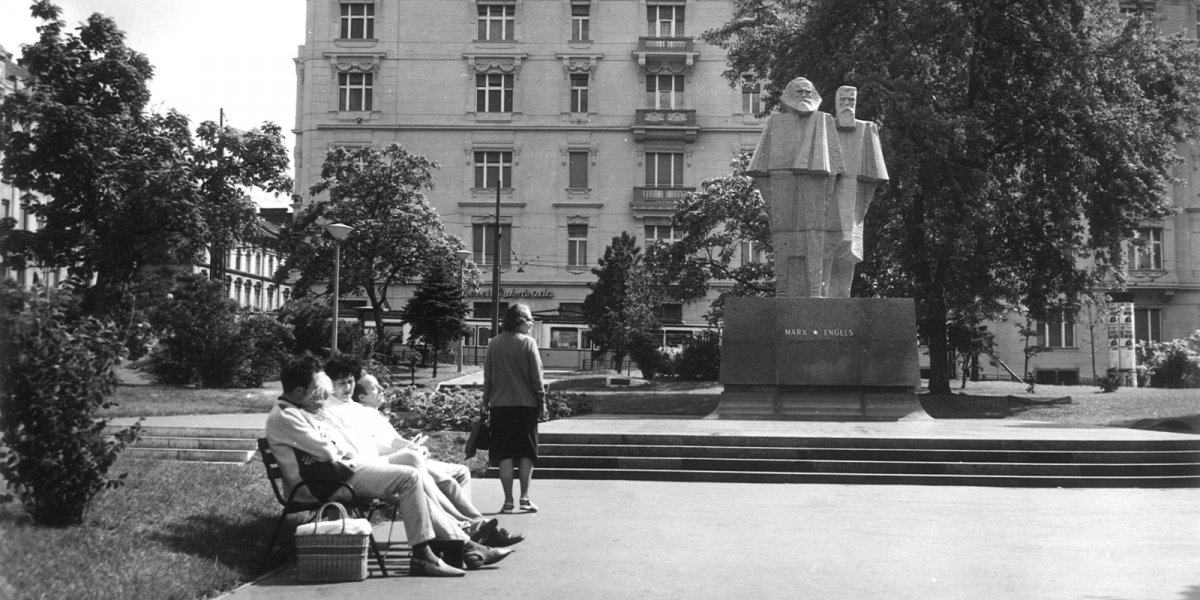Socialism considered the two 19th-century theoretical thinkers, Marx and Engels, as the “apostles” of the system alongside the revolutionist (and German agent [a contested question – ed.]) Vladimir Ilyich Lenin. Yet, only in 1971 was a statue erected of them in Budapest.
First Stalin and then Lenin were more important for the national leaders of the communist dictatorship in Hungary, meaning they inaugurated their statues first, as they were the leaders of the Soviet Union, the sphere of influence into which Hungary also belonged. The system's attitude towards Lenin is well illustrated by the fact that even in the frugal floodlight system of the 1970s, only the statue of Lenin had to be illuminated every day of the year.

Jászai Mari Square in 1972 with the statue of Marx and Engels, in the back to the right the former headquarters of the Hungarian Socialist Workers' Party (MSZMP), today's Offices of the National Assembly, the White House can be seen (Photo: Fortepan/No.: 141218)
The statue of Marx and Engels was less important, but in the end, it was completed. Sculptor György Segesdi and architect József Schall were commissioned to create it. Schall died in 1989, at the end of socialism, Segesdi passed away in 2021. The work depicting Karl Marx and Friedrich Engels became monumental and was placed in a prominent place, opposite the headquarters of the Hungarian Socialist Workers' Party (today's Offices of the National Assembly), on Jászai Mari Square. The party and state leaders of the time also made an appearance at the inauguration. On 1 May 1971, Magyar Hírlap reported:
“A new, monumental work of fine art was inaugurated on Friday among the public decorations of Budapest: the statue of Marx and Engels on Jászai Mari Square. The joint sculpture of two prominent figures of the international labour movement was inaugurated as part of a series of events related to the international celebration of the working class on May 1st.
János Kádár, the first secretary of the Central Committee of the Hungarian Socialist Workers' Party, György Aczél, Valéria Benke, Dezső Nemes, Károly Németh, members of the Political Committee appeared at the inauguration ceremony. In addition, the Central Committee of the Hungarian Socialist Workers' Party, several government members and many well-known people from political, social and cultural life took part."
1971 was not a particularly important year for the “international labour movement,” but why was the statue inaugurated then, 50 years ago? According to official explanations, the “socialist public” expressed the “longly maturing need” for the sculpture after celebrating the 150th anniversary of Marx’s birth three years before, then a year and a half later, Engels'.

The monumental sculpture composition on Jászai Mari Square, a year after its erection, in 1972 (Photo: Fortepan/No.: 1978)
György Segesdi originally envisioned the creation of a 4-meter-high, Cubist-style statue of the two “ancestors” in chrome steel. However, as the comrades already had a lot of it, the statue had to be made of Mauthausen granite.
The artist said the following about the huge and unusually designed sculpture according to the 30 April 1971 issue of Magyar Nemzet:
“Natural resemblance is of no concern. In the form of Marx and Engels, I wanted to represent the validity of their teaching and their human greatness at the same time. That I have deviated from the general image of people in this way, I can only say that the task of sculptors, among other things, is to shape imaginations.”
The statues stood in their original place for 20 years. After the fall of socialism, public monuments and artworks referring to the repressive system were removed. The Marx-Engels statue was the subject of much debate in Parliament in 1991, with some arguing for its preservation because of its artistic value.
The statues in Memento Park (Photo: Wikipedia, Ferran Cornellà)
In the end, the decision was made to remove it from Jászai Mari Square, but if a local council requests it, it could be erected elsewhere. However, no local council applied for the artwork, so it was placed in the memorial park of the sculptures of socialism, today's Memento Park, and can be seen there ever since.
The statue of Marx and Engels was replaced by the statue of Prime Minister Imre Nagy in 2019, who was executed after the 1956 revolution.
Cover photo: Jászai Mari Square and the enormous monument in 1978 (Photo: Fortepan/No.: 141291)





































Hozzászólások
Log in or register to comment!
Login Registration